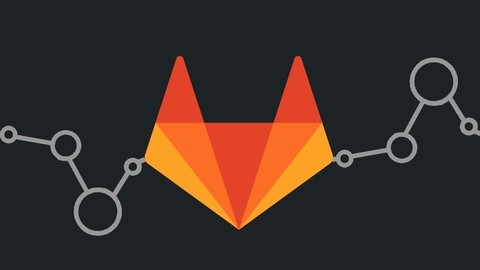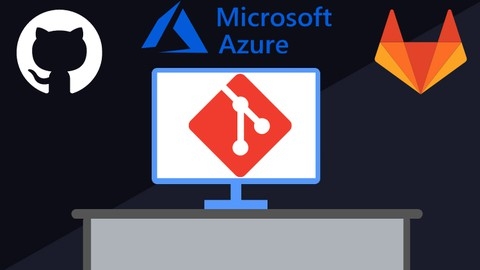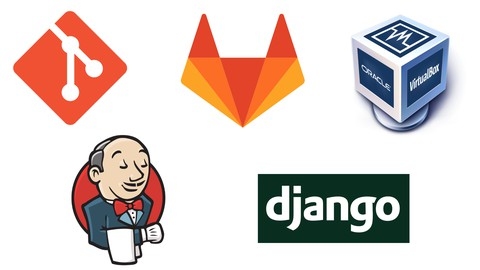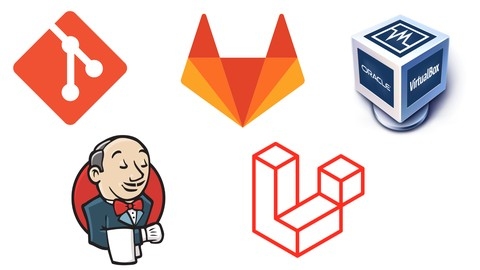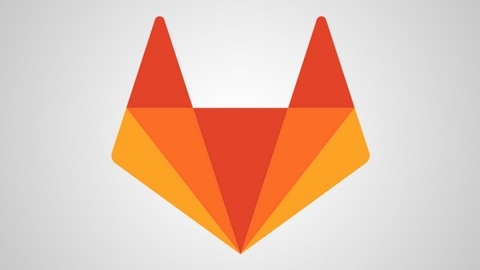GitLab CI/CD is a powerful tool that allows developers to automate the process of building, testing, and deploying their code.
This automation not only saves valuable time but also helps to improve the quality of software by catching errors early and ensuring consistent deployments.
By learning GitLab CI/CD, you can streamline your development workflow, increase efficiency, and become a more valuable asset to any development team.
If you’re looking to master GitLab CI/CD, you’ve probably found yourself overwhelmed by the sheer number of courses available on Udemy.
Choosing the right course can be a challenge, especially when you want a comprehensive learning experience that’s both beginner-friendly and dives deep into advanced concepts.
We understand the struggle, and we’re here to help you navigate the options.
After reviewing numerous GitLab CI/CD courses on Udemy, we’ve identified GitLab CI: Pipelines, CI/CD and DevOps for Beginners as the best course overall.
This course provides a comprehensive introduction to GitLab CI/CD, starting with the fundamentals and gradually building up to more complex topics.
It’s packed with practical examples and hands-on exercises, making it an excellent choice for anyone looking to gain a solid understanding of GitLab CI/CD, regardless of their prior experience.
While this is our top recommendation, we’ve also curated a list of other excellent courses that cater to different learning styles and specific needs.
So, continue reading to explore our comprehensive list of the best GitLab courses on Udemy and find the perfect one to launch your CI/CD journey!
GitLab CI: Pipelines, CI/CD and DevOps for Beginners
The course starts by introducing you to GitLab CI and pipelines through a simple example.
You’ll learn what pipelines are and how to define jobs and stages in GitLab’s .gitlab-ci.yml file.
This hands-on approach helps you understand the core concepts quickly.
From there, it dives into building a basic CI/CD workflow with GitLab CI.
Using a Node.js project, you’ll go through creating the project, building it locally and with GitLab CI, adding test stages, running jobs in parallel, and deploying to surge.sh.
You’ll also learn how to use environment variables to manage secrets.
The course then covers fundamental GitLab CI topics like caching, artifacts, deployment environments, variables, manual deployments, merge requests, and dynamic environments.
You’ll gain insights into troubleshooting and cleaning up after merge requests.
To strengthen your YAML skills, which are crucial for .gitlab-ci.yml files, there’s a dedicated chapter explaining YAML basics, anchors, and job templates.
The complexity increases as you build and deploy a Java application to AWS Elastic Beanstalk using GitLab CI.
You’ll learn about AWS services like S3, create application versions, verify deployments, and incorporate code quality checks with PMD.
There’s also an introduction to unit testing and running API tests with Postman.
Throughout the course, you’ll be exposed to various tools and technologies like Docker, Java Virtual Machine (JVM), Gradle, JUnit, and more.
While the focus is on building CI/CD pipelines with GitLab CI, you’ll get a glimpse into related areas like cloud services and DevOps practices.
Introduction to Git for GitLab projects
This course equips you with the essential skills to confidently use Git and GitLab for your projects.
You’ll start by installing Git on your Windows, Linux, or macOS system and quickly move on to creating your first Git repository.
This course teaches you to configure this repository, making it work the way you want.
You’ll then master fundamental Git commands such as git add, git commit, and git log to stage changes, unstage them, and view your project’s history.
You’ll learn about branching, a key feature that lets you work on different parts of your project simultaneously.
The course teaches you to create, merge (both fast-forward and recursive), and rebase these branches.
You’ll even learn to resolve those pesky merge conflicts that can arise when working with others.
Understanding the .gitignore file, a crucial element for managing your project, is also covered in this course.
The course then guides you through the world of GitLab, showing you how to set up SSH keys for secure connections.
You’ll learn how to push your changes to remote repositories hosted on GitLab and how to pull in changes from others.
The course also teaches you to navigate the GitLab web interface, where you can make commits directly, clone existing repositories, and work with merge requests, a standard method for proposing changes in GitLab.
GitLab CI - A Complete Hands-On for CI/CD Pipelines & DevOps
You will start with the basics, exploring CI/CD concepts and their significance in the software development lifecycle (SDLC).
You will quickly move into hands-on exercises, creating your first GitLab project, navigating the GitLab user interface, and even setting up a virtual machine.
The course dives into building CI/CD pipelines, the heart of automated software delivery.
You will learn to write pipelines using YAML, a human-readable data serialization language, and understand the intricacies of stages, jobs, and artifacts.
You will gain practical experience by creating pipelines for Node.js and Python applications, mastering the art of testing, building, and deploying code using GitLab.
You will learn how to leverage GitLab Runners, crucial for pipeline execution, and discover how to set them up locally to test your pipelines before deployment.
The course then guides you through building a Python application from scratch, teaching you how to write various tests using industry-standard frameworks like pytest and Flake8.
You will dive into Docker, building containerized applications using Dockerfiles, and pushing those images to the GitLab Container Registry for seamless deployment.
Finally, you will explore different deployment strategies, focusing on Heroku as a platform.
You will learn to deploy your application to staging and production environments and discover the power of static and dynamic environments within GitLab CI/CD for managing complex deployments.
Git Mastery: Beginner to Expert with GitHub & GitLab
This course takes you from a Git novice to an expert, starting with the nuts and bolts of what Git is and how it’s different from platforms like GitHub and GitLab.
You learn to install Git on both Linux and Windows, create a GitHub account, and master essential commands like “git add,” “git commit,” and “git push” to manage your code repositories.
You discover the power of branching and merging, essential for collaborating on projects, and learn how to fix those pesky merge conflicts using tools like Meld.
You then journey deeper into Git’s inner workings, learning about its object model, commits, branches, and merges.
You’ll explore how to rewind mistakes, work with remote repositories like a pro, and resolve merge conflicts like a coding ninja.
You’ll also get to grips with advanced Git maneuvers like rebasing, enabling you to streamline your workflow.
This course then equips you with the skills to wield powerful platforms like GitHub, GitLab, Azure DevOps, and Bitbucket.
You discover how to create pull requests, manage permissions, and collaborate effectively on projects.
The course also unpacks useful features like issues, labels, and project boards, helping you organize and manage your work efficiently.
Finally, you’ll dive into real-world workflows such as Gitflow and Trunk-based Development.
You learn how to smoothly integrate Git into your team’s workflow for seamless collaboration.
You explore advanced techniques such as Git hooks, which automate tasks, submodules, and even two-factor authentication to keep your code secure.
You also discover helpful tools such as etckeeper, which allows you to manage your Linux configuration files with Git like a pro.
DevOps: CICD with Git GitLab Jenkins, Docker and Django
This course guides you through building, testing, and deploying Django applications using a powerful toolkit that includes GitLab, Jenkins, Docker, and more.
You’ll begin by diving into virtual machines with VirtualBox, creating a simulated Ubuntu desktop and server environment directly on your computer.
This hands-on experience prepares you for the cloud, where you’ll spin up a Digital Ocean Droplet (a virtual server) and learn to manage it remotely.
The course doesn’t shy away from the practicalities of web development.
You’ll set up a Django application on your development machine, complete with Python, virtual environments, and all the essentials.
The polling app project gives you a taste of real-world development, showing you how to manage configuration files and environment variables.
You’ll master Git and GitLab, becoming comfortable with version control, remote repositories, and pushing your code securely for collaboration and deployment.
Get ready to dive into the world of production-ready applications.
You’ll learn how to prepare your Django project for the real world, setting up a dedicated deploy user, managing dependencies with a “requirements.txt” file, and configuring a PostgreSQL database.
The course guides you through deploying your application using Gunicorn and Nginx, ensuring your code is served efficiently and reliably.
You’ll explore continuous integration and continuous deployment (CICD) with both GitLab CI and Jenkins, mastering the art of automating your development workflow.
Finally, you’ll explore Docker, learning to package your Django application and its dependencies into portable containers.
This makes your application incredibly flexible, ready to run smoothly across different environments.
You’ll use Docker Compose to orchestrate multiple containers, ensuring all parts of your application work together seamlessly.
Gitlab CI CD Hands On - Build your own 50 Gitlab Pipelines
This GitLab CI/CD course teaches you how to use continuous integration and continuous delivery with GitLab.
You will start by creating a GitLab account and setting up a GitLab Runner on an AWS EC2 instance.
You will also learn how to set up Docker on the VM and understand GitLab Runner concurrency limits.
You will then dive into the basics of GitLab CI, including stages, scripts, variables, and how to create your first demo project.
The course then guides you through more advanced features, like artifacts, cache, templates, and pipeline scheduling.
You will learn how to use GitLab CI to create Docker CI projects and manage artifacts, pages, and package registries.
As you progress, you’ll tackle challenges like setting up Dockerfiles for parallel builds, managing job failures, working with concurrent limits, and using features like rules, needs, and retries.
You’ll learn to integrate GitLab CI with other tools and technologies.
You will learn how to integrate your projects with Kubernetes clusters, specifically Amazon Elastic Kubernetes Service (EKS), and how to use Terraform to integrate Infrastructure as Code (IaC) with CI/CD.
Finally, you’ll explore security features within GitLab CI, including DAST scanning, container scanning, and IaC scanning, to help you build secure applications.
Through practical assignments, you will learn how to build secure and efficient CI/CD pipelines for your projects.
DevOps Project: CICD with Git GitLab Jenkins and Laravel
This course teaches you how to build and launch software quickly and reliably using CI/CD, key practices in today’s software development world.
The course starts by showing you how to set up your workspace with virtual machines using tools like Oracle VirtualBox and Digital Ocean.
You’ll learn about Ubuntu, a popular operating system for servers, and dive into Git and GitLab for managing your code and working with others.
Then, you’ll discover how to set up a production server, configure a LEMP stack (Linux, Nginx, MySQL, and PHP), and create a secure way to access it.
You’ll then explore the world of automated deployments with Jenkins.
This tool helps you automate the process of building, testing, and deploying your code.
Imagine a pipeline that takes your code from your computer to the live web server without you lifting a finger – that’s what Jenkins can do!
You’ll learn how to configure this pipeline to automatically build, test, and deploy your Laravel application whenever you make changes, sending you email alerts if any issues pop up.
Finally, you’ll learn how to use GitLab’s built-in CI/CD tools.
You’ll discover how to use GitLab runners, configure pipelines, and deploy applications directly from GitLab.
Gitlab / GitLab CI For Beginners: Become a DevOps Expert Now
You’ll begin by installing GitLab on your Windows system and mastering crucial Git commands.
You’ll become comfortable with branching, rebasing, and squashing commits – essential skills for seamless teamwork.
You’ll discover how to manage users, groups, and permissions, ensuring the security of your projects.
Next, you’ll explore GitLab’s robust issue management system.
You’ll learn to create issues, merge requests, and reference them in your commits.
You’ll also master the use of milestones to track your project’s progress effectively.
The course even demonstrates how to import repositories from platforms like BitBucket.
This course goes beyond the basics by introducing you to Continuous Integration (CI) with GitLab.
You’ll discover how to automate your development workflows by setting up pipelines using YAML files.
You’ll become proficient in triggering pipelines and analyzing their performance with Cycle Analytics – valuable skills for any developer.
Finally, you’ll delve into the GitLab Container Registry, a powerful tool for storing and managing container images.



